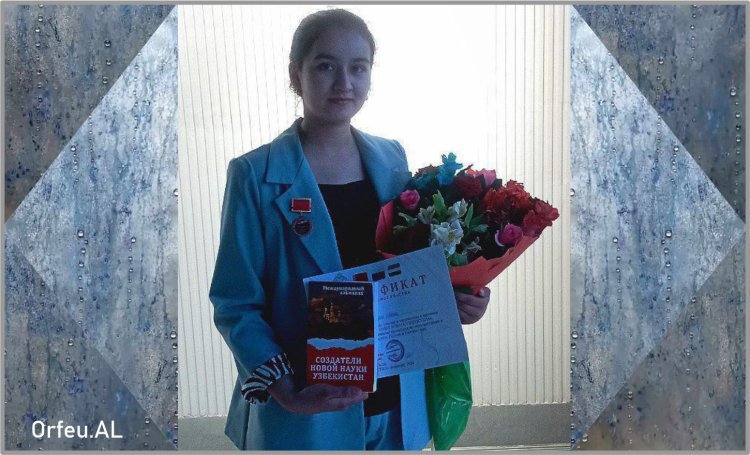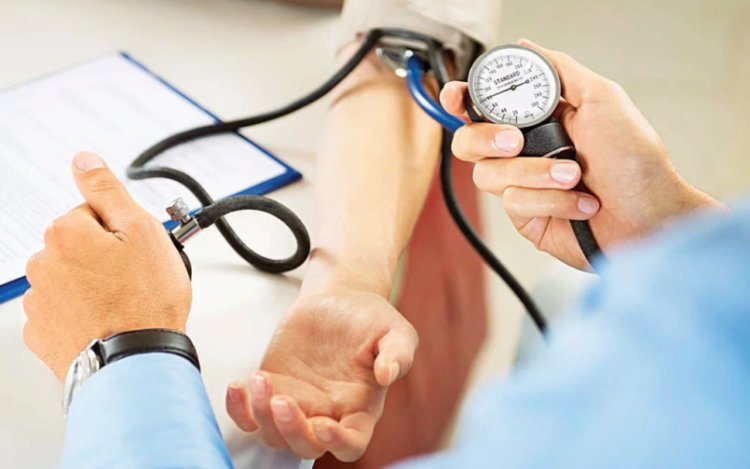Izzatilloyeva Dilshoda
Hypertension: Causes, Symptoms, and Home Remedies.
Abstract
This article provides information about hypertension, a common condition characterized by high blood pressure. It explores the causes, symptoms, and risk factors associated with hypertension, as well as natural remedies and lifestyle modifications that can help manage this condition.
Keywords: Hypertension, high blood pressure, causes, symptoms, treatment, healthy lifestyle.
Introduction
Hypertension is a medical condition characterized by elevated blood pressure. It is a common health problem, particularly among adults over 40 years old, but its incidence has been rising in younger populations as well. Both men and women are affected by hypertension, and it is a significant risk factor for heart disease and stroke.
Main Body
The primary symptom of hypertension is a headache caused by the constriction and spasm of blood vessels in the brain. Other common symptoms include tinnitus, blurred vision, fatigue, sleep disturbances, dizziness, a heavy feeling in the head, and rapid heartbeat. These symptoms are often subtle in the early stages of the disease. Over time, the strain on the heart can lead to heart failure.
Factors that contribute to the development of hypertension include:
* Excess weight and metabolic disorders
* Endocrine disorders
* Sedentary lifestyle
* Chronic stress, depression, and traumatic experiences
* Intense emotional stress due to work or personal problems
* Head injuries (car accidents, falls, hypothermia)
* Chronic diseases that negatively affect the cardiovascular system (diabetes, gout, rheumatoid arthritis)
* Family history
* Viral and infectious diseases (meningitis, sinusitis)
* Age-related changes in blood vessels
* High cholesterol levels, leading to the formation of plaque in the blood vessels
* Unhealthy habits (smoking, excessive alcohol consumption, excessive caffeine intake)
* High salt intake
* Increased adrenaline levels
* Prolonged sitting at a computer
* Lack of physical activit
When is blood pressure considered high?
For a healthy individual, normal blood pressure is considered to be between 110-130/70-90 mmHg. When these values deviate, it is necessary to monitor the condition, change habits and lifestyle, and undergo regular check-ups to prevent the development of the disease.
Furthermore, high blood pressure can be divided into three main stages:
* Stage 1: 140/90 mmHg and above
* Stage 2: 160/100 mmHg and above
* Stage 3: 180/110 mmHg and above
Hypertension can be a symptom of other diseases such as diabetes, kidney and adrenal dysfunction, liver or thyroid problems. It is important to undergo regular preventive medical examinations and monitor high blood pressure at the initial stages to avoid more serious consequences.
For adults, normal blood pressure is considered to be 120 mmHg for systolic (upper) pressure and 80 mmHg for diastolic (lower) pressure. Hypertension is diagnosed when systolic pressure is 140 mmHg or higher, and diastolic pressure is 90 mmHg or higher.
Translation:
When is blood pressure considered high?
Normal blood pressure for a healthy adult is between 110-130/70-90 mmHg. When these values deviate, it is necessary to monitor the condition, change habits and lifestyle, and undergo regular check-ups to prevent the development of the disease.
Furthermore, high blood pressure can be divided into three main stages:
* Stage 1: 140/90 mmHg and above
* Stage 2: 160/100 mmHg and above
* Stage 3: 180/110 mmHg and above
Hypertension can be a symptom of other diseases such as diabetes, kidney and adrenal dysfunction, liver or thyroid problems. It is important to undergo regular preventive medical examinations and monitor high blood pressure at the initial stages to avoid more serious consequences.
For adults, normal blood pressure is considered to be 120 mmHg for systolic (upper) pressure and 80 mmHg for diastolic (lower) pressure. Hypertension is diagnosed when systolic pressure is 140 mmHg or higher, and diastolic pressure is 90 mmHg or higher.
Medications Used for First Aid in Cases of High Blood Pressure
Nifedipine (Fenigidin)
A blood pressure lowering medication. It lowers blood pressure, improves coronary circulation, and dilates peripheral blood vessels. It is usually prescribed in tablet form, with an active ingredient of 10 mg. During a hypertensive crisis, 1 tablet (10 mg) is placed under the tongue. If necessary, another tablet can be taken after 30 minutes. Long-term use of this drug should only be prescribed by a physician.
Captopril
A hypotensive agent - dilates blood vessels, reduces peripheral vascular resistance, and improves coronary circulation. During a hypertensive crisis, one tablet is placed under the tongue (25 mg). Available in tablet form, 12.5 mg, 25 mg or 50 mg.
Valocordin
A preparation consisting of ethylbromisovalerate, phenobarbital, peppermint oil, and hops. It has a sedative and mild hypnotic effect, is a spasmolytic and vasodilator. Available in drops and taken orally. To achieve a quick effect, the drug is taken in 40 drops dissolved in water.
Valerian tincture
Has a sedative, mild spasmolytic, and mild hypnotic effect. It is effective when taken in the early stages of hypertensive disease. It is used as a sedative when arterial blood pressure rises, reduces nervous system excitability, 20-30 drops of the tincture are dissolved in water and given to the patient to drink.
If you do not have any medications on hand and cannot call for emergency medical help, you can use several methods to lower blood pressure:
Breathing and relaxation: Lie in a comfortable position, ensure a fresh air supply, and relax your arms and legs. Try to breathe deeply and slowly for a few minutes. Inhale through your nose (4-5-6 counts). Then exhale through your mouth (if possible, its duration should be 2-3 or more times longer than inhalation through the nose). As you inhale, your abdomen should "inflate". Fill the lower part of the lungs, then the chest, and finally the upper part of the lungs with air. Exhale as much as possible, which will relieve tension. This is called diaphragmatic or full yoga breathing.
Massage and Self-Care for High Blood Pressure
Massage, particularly of the neck, shoulders, and the specific point 2 cm above the hairline at the back of the head (which should be massaged for 5 minutes), can be beneficial. Massaging a portion of the upper back and neck is also recommended. Movements should be slow but with more pressure than gentle strokes.
Acupressure, which involves applying pressure to specific points on the body, can also be helpful.
Infused herbal teas with calming and diuretic properties, such as valerian, lemon balm, peppermint, cranberry, chamomile, and motherwort, can be soothing.
Freshly squeezed beetroot juice, containing nitrates, potassium, and magnesium, can help normalize blood pressure.
Warm baths for hands and feet can also provide relief.
Mustard plasters on the lower legs can improve blood flow to the lower extremities and promote vasodilation, contributing to a decrease in blood pressure.
Conclusion:
A sedentary lifestyle is a primary contributor to the development of this condition. As we age, atherosclerosis can develop, which, combined with high blood pressure, can lead to serious health complications. This is because narrowed blood vessels can restrict blood flow to vital organs such as the brain, heart, and kidneys.
"References"
1.(Haseki T›p Bülteni 2014; 52: 251-5)
2. Anadolusaglik.org
3.Ichki kasalliklar tibbiy-ilmiy nashr Abdugaffor Gadayev -Toshkent: muharrir nashriyoti -2020
5.Prof Dr Alp Aydınalp.com
6.Sağlik bilimleri üniversitesi
Izzatilloyeva Dilshoda was born on June 10, 2004, in Romitan District, Bukhara Region. She is currently a 4th-year student in the Faculty of Medicine (Turkey Program) at Bukhara State Medical Institute, specializing in General Medicine.
The article was published without interference!



